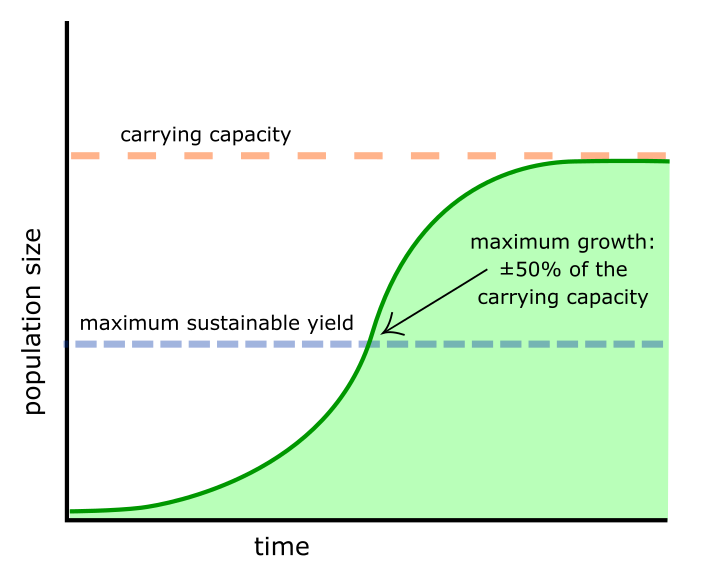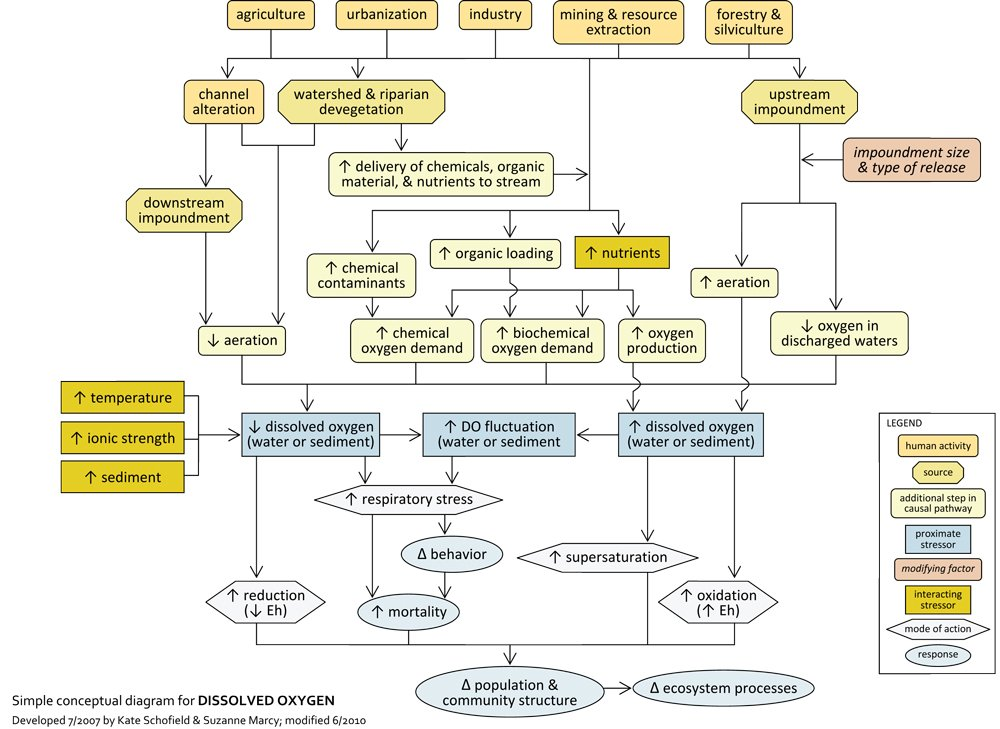IB Syllabus focus:
‘Sustainable use means harvesting below regeneration and releasing wastes below transformation rates; overuse and pollution harm ecosystems and societies.’
Sustainable resource management ensures societies can meet present needs without jeopardising the ability of future generations to do so. It balances ecological regeneration, waste absorption, and human demands.
Understanding Sustainable Use
At the heart of managing for sustainability is the recognition that natural systems have limits. Human exploitation must operate within these boundaries to ensure resources remain available. Sustainability depends on maintaining ecological balance between consumption, regeneration, and waste processing.
Sustainability: The use of resources at a rate that allows natural regeneration and waste absorption, ensuring availability for future generations.
Regeneration Rates and Harvesting
Natural systems can replenish themselves, but this capacity varies widely depending on the resource and ecosystem. For sustainability, harvesting must remain below regeneration rates.

This diagram shows logistic population growth with carrying capacity and the point of maximum sustainable yield (MSY), where net biological growth peaks. Harvesting at or below this level keeps extraction beneath regeneration, maintaining stock over time. Source.
Forests regenerate biomass slowly; clear-cutting exceeds regeneration.
Fisheries can collapse if catches surpass breeding rates.
Freshwater supplies must be used at a rate slower than recharge of aquifers and rainfall cycles.
Regeneration Rate: The speed at which a renewable resource naturally replenishes itself within an ecosystem.
When extraction exceeds this rate, renewable resources effectively become non-renewable.
Waste Assimilation and Transformation
Natural systems also process wastes through assimilation and transformation. For example:
Wetlands filter pollutants.
Oceans absorb and neutralise carbon dioxide.
Soil microbes decompose organic matter.
For sustainability, waste releases must stay below transformation rates. Exceeding this capacity leads to harmful accumulation, ecosystem damage, and social consequences.

A simplified causal pathway shows how sources (e.g., agriculture, wastewater) increase biochemical oxygen demand and reduce dissolved oxygen, stressing aquatic life. This visual represents the concept of assimilative (transformation) capacity—the limit to waste a system can process without harm. The diagram includes extra contextual factors (e.g., temperature) not required by the syllabus but clarifying the mechanism. Source.
Transformation Rate: The maximum rate at which an ecosystem can absorb, neutralise, or recycle wastes without long-term harm.
Consequences of Overuse and Pollution
When sustainable limits are exceeded, societies face serious ecological and economic consequences:
Biodiversity loss from habitat destruction and species overharvesting.
Soil degradation through over-farming and fertiliser misuse.
Water scarcity from aquifer depletion and river diversion.
Climate change driven by excessive carbon emissions beyond absorption rates.
These impacts undermine ecosystem services and reduce natural capital available to societies.
Linking Sustainable Use to Natural Capital
Natural capital is the stock of natural resources that provide goods and services, such as clean air, fertile soil, and timber. The sustainable use of these stocks ensures continued flows of natural income—the benefits humans derive.
Overharvesting reduces future natural income.
Pollution decreases the quality and productivity of natural capital.
Sustainable practices preserve long-term income by safeguarding regeneration and assimilation capacities.
Approaches to Sustainable Resource Management
Reducing Consumption
Promoting efficiency in production and energy use.
Encouraging reduced demand through education and policy.
Transitioning towards circular economies to minimise waste.
Protecting Regeneration
Enforcing catch limits in fisheries.
Implementing reforestation and sustainable forestry.
Managing groundwater withdrawals with quotas.
Managing Waste
Treating industrial effluents before release.
Adopting low-emission technologies.
Recycling and reusing materials to avoid excess disposal.
Institutional and Policy Tools
International agreements like the Paris Agreement for climate regulation.
National legislation restricting harmful practices.
Market instruments such as taxes, subsidies, and tradable permits.
Social and Economic Dimensions
Managing for sustainability is not purely ecological—it involves balancing human needs and equity. Challenges arise when short-term economic gains conflict with long-term environmental health.
Key considerations include:
Equity between generations: preserving resources for the future.
Global inequalities: resource-rich regions face exploitation pressures.
Technological development: cleaner production can expand sustainability.
Case Illustrations of Sustainable Practices
Sustainable fisheries use quotas and protected areas to balance harvest and regeneration.
Forestry certification ensures timber is harvested below regeneration rates.
Carbon pricing internalises the cost of pollution to encourage sustainable waste limits.
Integrating Ecological Limits into Human Decision-Making
Societies must recognise that ecosystems impose limits on what can be sustainably extracted and absorbed. Failure to incorporate these boundaries into decision-making risks ecological collapse and human hardship. By aligning economic activities with ecological regeneration and transformation capacities, resource security can be maintained for future generations.
FAQ
Carrying capacity refers to the maximum population or resource use an ecosystem can support without long-term decline. Regeneration rate, however, measures how quickly resources replenish.
Sustainable management requires keeping harvest levels below the regeneration rate, but also ensuring overall demand stays within the system’s carrying capacity.
Scientists use indicators such as:
Growth rates of species populations (e.g., fish stock surveys).
Forest growth versus logging rates.
Groundwater recharge compared with extraction.
Modelling and long-term monitoring help determine whether use is sustainable or exceeding ecological limits.
Different ecosystems have varying physical, chemical, and biological processes.
Wetlands filter nutrients and toxins through vegetation and microbes.
Oceans dilute and absorb carbon dioxide but have slower responses to plastics.
Forest soils break down organic matter quickly, but toxic metals persist much longer.
The rate depends on ecosystem type, climate, and the pollutant’s nature.
Technology can:
Improve efficiency, reducing pressure on regeneration rates.
Develop cleaner processes that minimise pollutant releases.
Enhance monitoring to detect when ecosystems approach their transformation limits.
However, poorly regulated technologies may increase unsustainable exploitation.
Cultures valuing long-term stewardship often impose traditional harvest limits, rituals, or seasonal restrictions.
In contrast, societies prioritising short-term economic gain may overlook ecological thresholds, leading to overuse and pollution.
Cultural attitudes therefore shape policy, enforcement, and societal acceptance of sustainability measures.
Practice Questions
Question 1 (2 marks)
Define the term transformation rate and explain its role in sustainable resource use.
Mark Scheme
1 mark for correct definition: maximum rate at which an ecosystem can absorb, neutralise, or recycle wastes without long-term harm.
1 mark for explanation: sustainability requires waste release to stay below this rate.
Question 2 (5 marks)
Discuss how harvesting above regeneration rates and releasing wastes above transformation rates can impact both ecosystems and human societies.
Mark Scheme
Up to 2 marks for explanation of exceeding regeneration rates: e.g., overfishing, deforestation leading to resource depletion.
Up to 2 marks for explanation of exceeding transformation rates: e.g., pollution accumulation, ecosystem degradation, biodiversity loss.
1 mark for linking to impacts on human societies: e.g., reduced natural income, food insecurity, health risks, economic loss.

